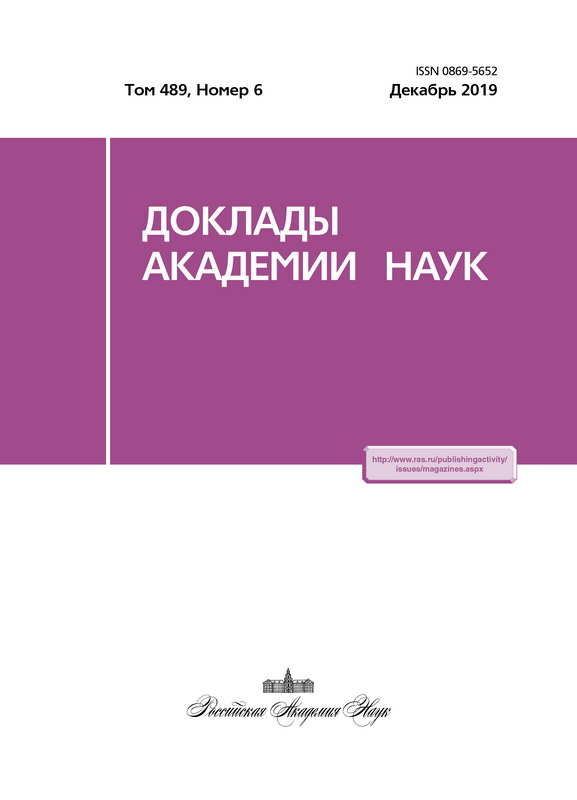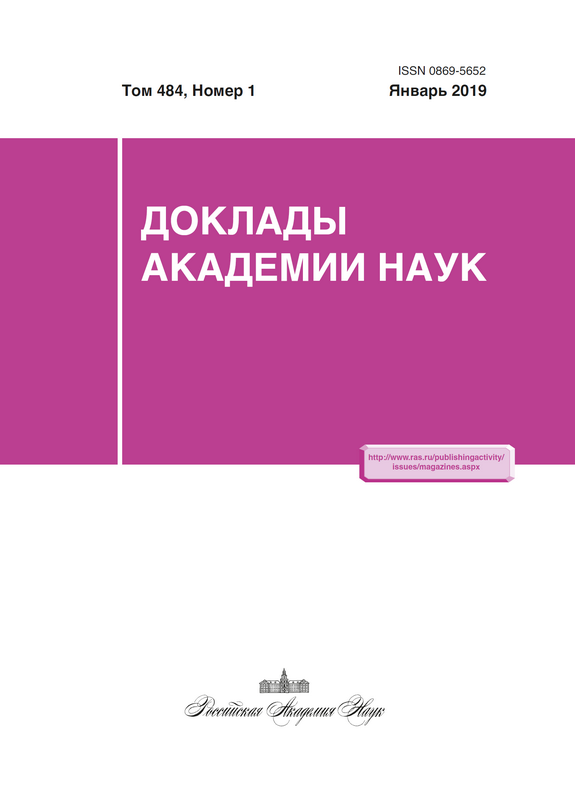Влияние вкусового рецепторного белка T1R3 на развитие островковой ткани поджелудочной железы мыши
- Авторы: Муровец В.О.1, Созонтов Е.А.1,2, Зачепило Т.Г.1
-
Учреждения:
- Институт физиологии им. И.П. Павлова Российской Академии наук
- Санкт-Петербургский государственный университет
- Выпуск: Том 484, № 1 (2019)
- Страницы: 117-120
- Раздел: Физиология
- URL: https://journals.eco-vector.com/0869-5652/article/view/12155
- DOI: https://doi.org/10.31857/S0869-56524841117-120
- ID: 12155
Цитировать
Аннотация
При исследовании мышей с нокаутом гена Tas1r3 и родительской линии C57BL/6J в качестве контрольной получили приоритетные данные о влиянии белка T1R3 на морфологию островков Лангерганса поджелудочной железы. У мышей с нокаутом Tas1r3 выявили уменьшение размера островков и плотности их расположения по сравнению с мышами C57BL/6J и снижение экспрессии активной каспазы-3 в островковой ткани. Таким образом, отсутствие нормально функционирующего гена рецептора сладкого вкуса T1R3 приводит к дистрофии островковой ткани и сопряжено с развитием патологических изменений поджелудочной железы, характерных для диабета типа 2 и ожирения у человека.
Ключевые слова
Об авторах
В. О. Муровец
Институт физиологии им. И.П. Павлова Российской Академии наук
Автор, ответственный за переписку.
Email: murovetsvo@infran.ru
Россия, 199034, г. Санкт-Петербург, ул. Макарова, 6
Е. А. Созонтов
Институт физиологии им. И.П. Павлова Российской Академии наук; Санкт-Петербургский государственный университет
Email: murovetsvo@infran.ru
Россия, 199034, г. Санкт-Петербург, ул. Макарова, 6; 199034, г. Санкт-Петербург, Университетская наб., д.7/9
Т. Г. Зачепило
Институт физиологии им. И.П. Павлова Российской Академии наук
Email: murovetsvo@infran.ru
Россия, 199034, г. Санкт-Петербург, ул. Макарова, 6
Список литературы
- Damak S., Rong M., Yasumatsu K., Kokrashvili Z., Varadarajan V., Zou S., Jiang P., Ninomiya Y., Margolskee R.F. // Science. 2003. V. 301. № 5634. P. 850–853.
- Laffitte A., Neiers F., Briand L. // Curr. Opin. Clin. Nutr. Metab. Care. 2014. V. 17. № 4. P. 379–385.
- Муровец В.О., Бачманов А.А., Травников С.В., Чурикова А.А., Золотарев В.А. // Журн. эволюц. биохимии и физиологии. 2014. Т. 50. № 4. С. 296–304.
- Murovets V.O., Bachmanov A.A., Zolotarev V.A. // PLoS ONE. 2015. V. 10. № 6. e0130997.
- Kojima I., Medina J., Nakagawa Y. // Diabetes Obes. Metab. 2017. V. 19. Suppl. 1. P. 54–62.
- Муровец В.О., Созонтов Е.А., Андреева Ю.В., Хропычева Р. П., Золотарев В.А. // Рос. физиол. журн. им. И.М. Сеченова. 2016. Т. 102. № 6. С. 668–679.
- Masubuchi Y., Nakagawa Y., Medina J., Nagasawa M., Kojima I., Rasenick M.M., Inagaki T., Shibata H. // PLoS ONE. 2017. V. 12. № 5. e0176841.
- Linnemann A.K., Baan M., Davis D.B. // Adv. Nutr. 2014. V. 5. № 3. P. 278–288.
- Butler A.E., Janson J., Soeller W.C., Butler P.C. // Diabetes 2003. V. 52. № 9. P. 2304–2314.
- Katsuda Y., Ohta T., Miyajima K., Kemmochi Y., Sasase T., To B., Shinohara M., Yamada T. // Exp. Anim. 2014. V. 63. № 2. P. 121–132.
- Wauson E.M., Zaganjor E., Lee A-Y., Guerra M.L., Ghosh A.B., Bookout A.L., Chambers C.P., Jivan A., McGlynn K., Hutchison M.R., Deberardinis R.J., Cobb M.H. // Mol. Cell. 2012. V. 47. № 6. P. 851–862.
- Ding L., Yin Y., Han L., Li Y., Zhao J., Zhang W. // J. Endocrinol. 2017. V. 232. № 1. P. 59–70.
- Balcazar N., Sathyamurthy A., Elghazi L., Gould A., Weiss A., Shiojima I., Walsh K., Bernal-Mizrachi E. // J. Biol. Chem. 2009. V. 284. № 12. P. 7832–7842.
- Yabe D., Seino Y. // Prog. Biophys. Mol. Biol. 2011. V. 107. № 2. P. 248–256.
- Herbach N., Bergmayr M., Goke B., Wolf E., Wanke R. // PLoS ONE. 2011. V. 6. № 7. e22814.
Дополнительные файлы







